How to Break 100 in Golf: Tips to Lower Your Score (and Stress)

By Coach Erik Schjolberg – Feb 26, 2024
Contents
Key Takeaways – Tips for Breaking 100 in Golf
- The key to breaking 100 is eliminating the large numbers on the scorecard when those are eliminated; this process is considerably easier
- Even making just one par during 18 holes can help you get much closer to breaking 100
- The mental and strategic side of breaking 100 is something that most amateur golfers overlook, yet it can be a great way to get you to your goals faster
If you feel like you are the only one who struggles to break 100, think again. Most golfers (that keep score correctly) will have a hard time breaking 100 or have an average score of around 100. The biggest issue that players have with learning to break 100 is that they overcomplicate it. Trust me; if you can learn a few basic shots, some scoring strategy, and control your temper, I can teach you how to break 100 in golf.
In this guide, I’ll show you what breaking 100 consistently looks like, how much you need to practice both on and off the course, and some of my favorite tips to help make this process more enjoyable.
What Does Breaking 100 in Golf Look Like?
One of the most important aspects of breaking 100 is understanding what you have to do to see that 99 on the scorecard. I can tell you this if your first drive misses the fairway or you three-putt the first green, you are still well on your way to breaking 100.
Most of the time, an average golfer gets too concerned with scoring and doesn’t realize that making a bogey on a hole, or even a double bogey, is not ruining your chance of breaking 100 golf score.
We know that to shoot 90, you will bogey every hole. Therefore to shoot 99, you can double bogey 9 holes and bogey 9 holes to shoot a 99.
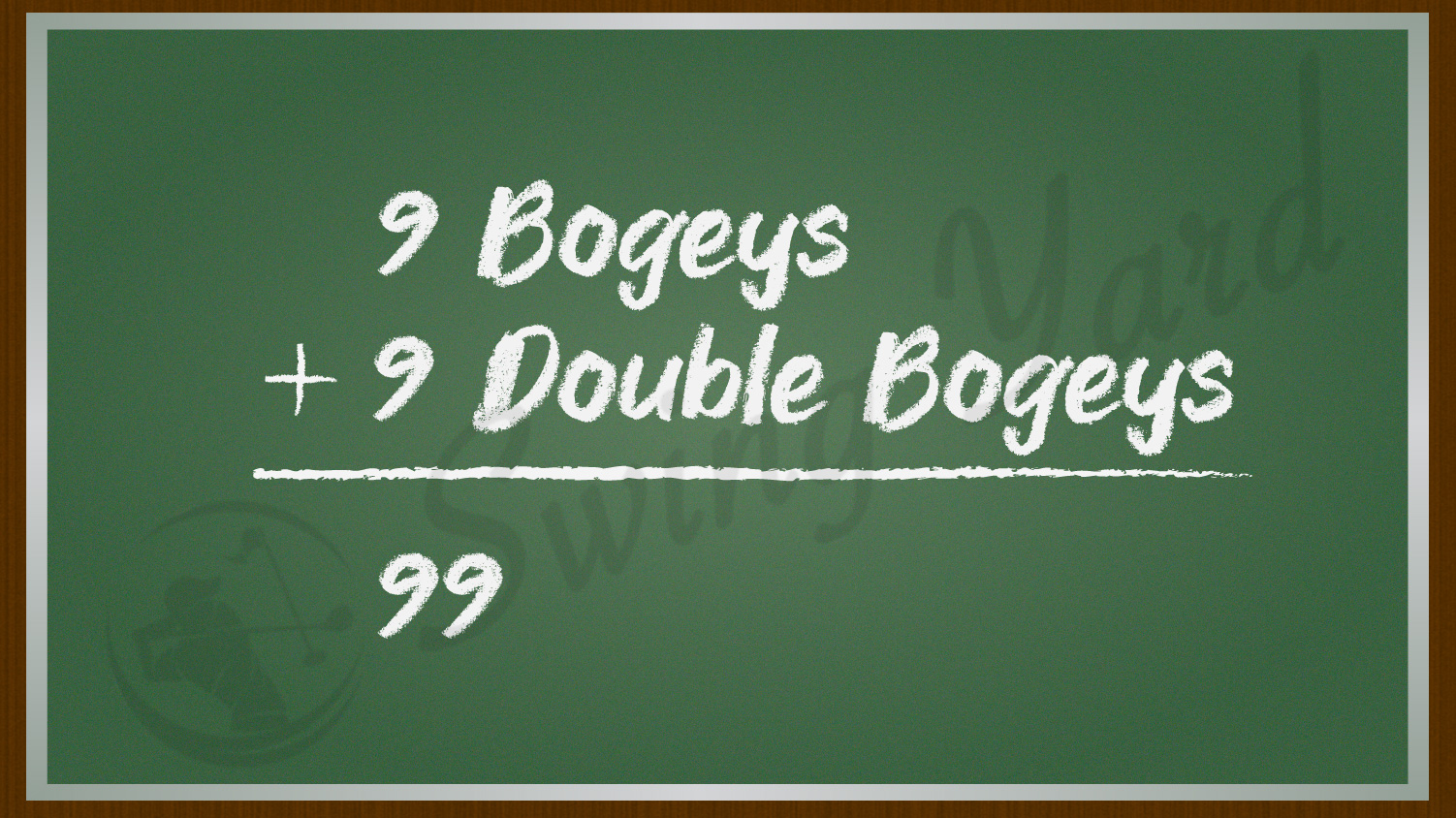

That’s quite a few double bogeys!
Now, if one of those doubles turns into a triple, you must make a par to make up for it. The bottom line is that you can hit the golf ball poorly quite a few times and still shoot lower than 100. However, the key is to eliminate the big numbers on the card.
As soon as you make an eight or a nine on a hole, you will then have to make a few pars to clean it up, and that gets more difficult.
How to Break 100 in Golf
When studying all the golf tips to break 100, it’s best to divide the game down into individual parts to make the process easier to understand. The tee shots, fairway shots, short game shots, and putting green shots are the main categories, but strategy and equipment are also essential to understand.
Tee Shots
Many higher handicap golfers struggle with the tee shot. The slice is by far the most common miss, and this shot shape causes a lot of confusion and frustration. If you want to break 100, it helps to hit straighter drives off the first hole.
One of my best pieces of advice here is to use something other than a driver from the tee box at times. If you can learn how to hit a fairway wood or hybrid straight, use this on the holes that are tighter and have a higher chance of you getting in trouble.
Remember that to break 100; you don’t need to par every hole. Therefore if it takes you three shots to get to the green and you make a two putt, that is entirely acceptable.


If hitting a reliable club off the tee costs you a few yards, it’s not a major concern. The quicker you learn that playing golf is mostly about strategy, the better your chance to score low.
In addition to choosing a good driver for beginners on your tee shot, make sure that you are aiming correctly as well. If there is water down the right side of the fairway and you are known to slice the ball, aim more toward the left or the center and give yourself room for a bit of a slice.
Practice aiming at the driving range; it is just as much of a skill as releasing the club or keeping your club path on the plane.
Fairway or Approach Shots
The approach shots can be anything from a fairway wood to a wedge, but the more you can learn to hit solid shots close to the green, the easier it is to break 100.
Club Type
Fairway woods are used for the longer shots into the green. Although these are great from a distance perspective, the accuracy of a fairway wood is not always quite as good. Choose to use fairway woods on a course where the area around the green is more open, and there is less trouble.
Hybrids should be your best friend when learning how to break 100. A hybrid is an excellent club from both the fairway and the rough. Most golf courses have several cuts of rough, and hybrids cut through all of them with ease.


When it comes to irons, you have to dial in your yardages. You should know not only how far you hit each of your irons but how far the iron carries.
For instance, I can hit a 7-iron 155 yards. However, I know that it only carries about 151 yards for most shots. This means that if I’m going over a water hazard and I have 160 yards to a pin, I better use a reliable club. The 7 iron will probably come up short and be in the water.
Be honest about your yardages; if you don’t hit the ball that far that is fine. It’s more important to know how far you hit it than to be worried about getting a ton of distance.
Aiming
Aiming the iron shots is another huge factor in eliminating those higher numbers on the course. To shoot lower scores, you will want to keep the iron shots out of the bunkers and the thick grass. If you come up a little short when attempting to hit the green, that doesn’t matter; a quick chip shot will put you back into play.
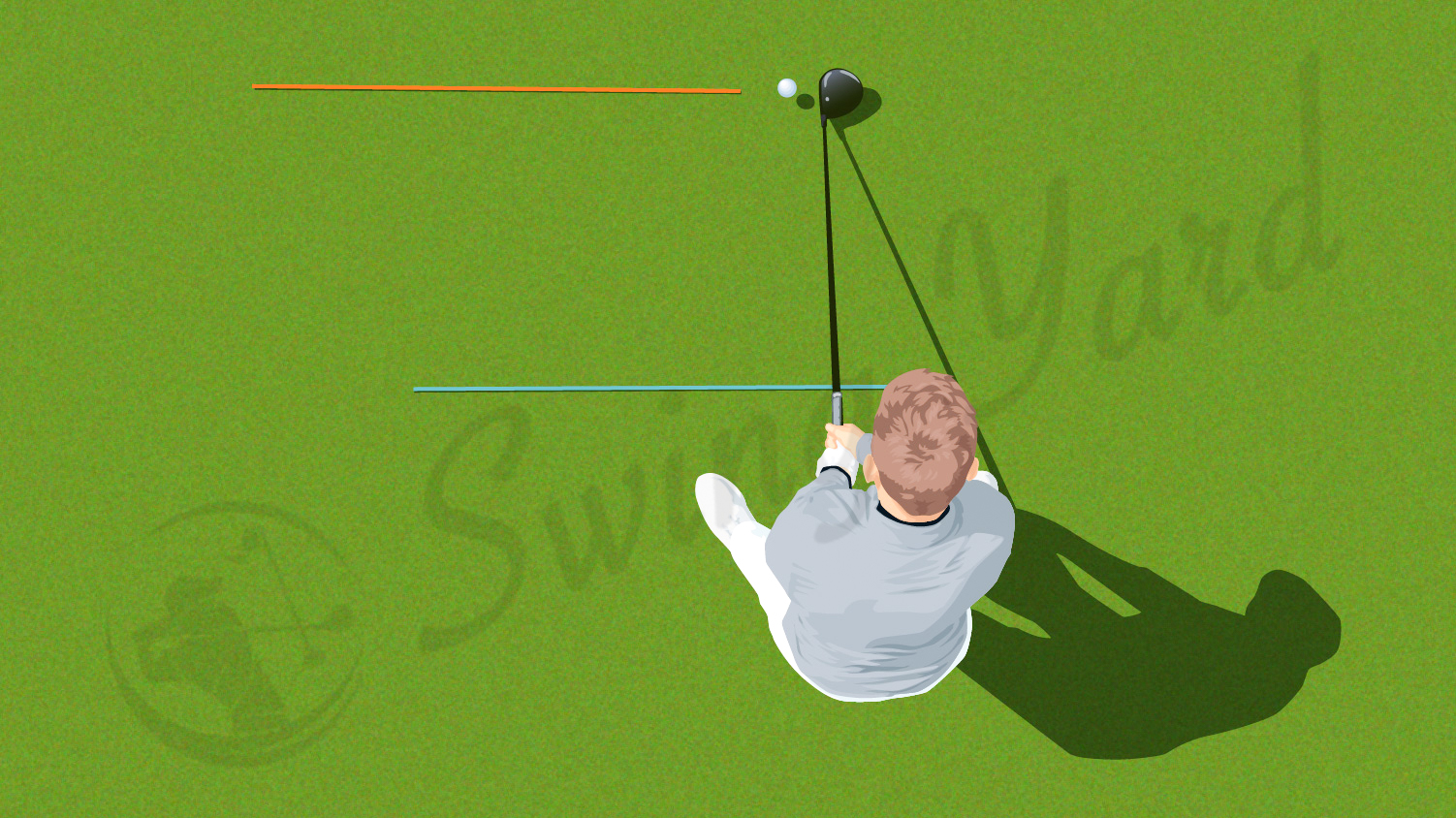

The big important factor here is staying out of trouble.
Use golf alignment sticks when you practice at the driving range. Many find that their feet or shoulders are misaligned, causing issues with consistency and aiming.
Mistakes
If you are working on trying to break 100, you should fully expect that you are going to make some mistakes on the course. The key is not to let your mistakes rattle you and not to let them cost you shots.
If you are hitting balls fat with your irons, switch to a hybrid that day until you have the golf swing issues worked out.
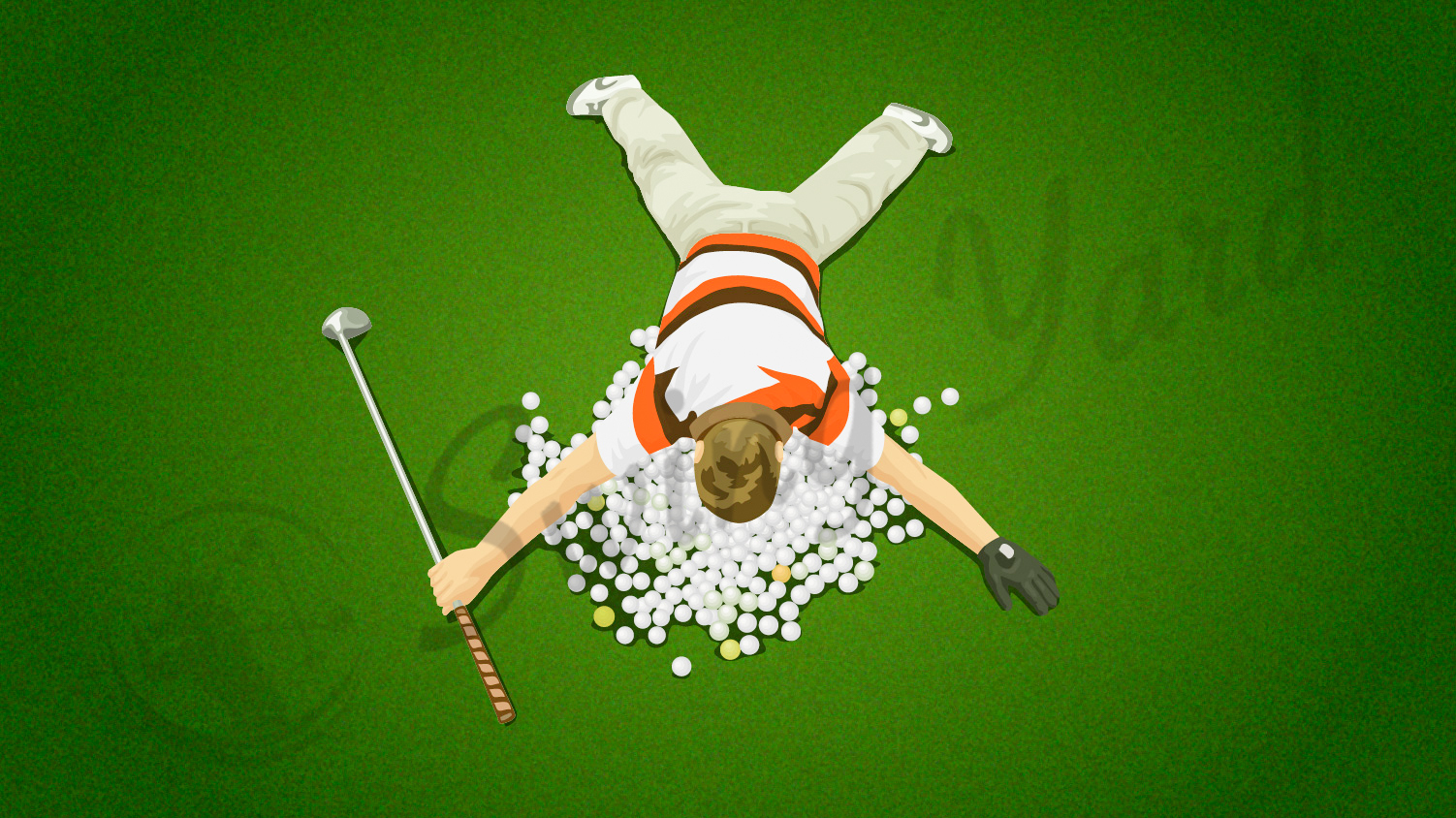

If it takes you two shots to get out of a fairway bunker, move on and keep trying to make up for it somewhere else. If you can get the ball on the green and make one putt, you will have recovered from your mistakes.
The key is not to compound the mistakes by making poor decisions; more on that later!
Short Game
If you want to break 100, it helps to have a really excellent sand wedge that you can trust. Hitting shots that land on the green is great, but getting the ball closer to the hole certainly makes it easier to score.
I like to have at least two or three different types of short game shots.
The first is a low bump, and run type shot that you can use to roll the ball to a pin in the back of the green. Many courses have an approach in front of the green with shorter grass. Taking a smaller swing where the ball stays low and runs up to the pin is a very safe and smart option when trying to break 100.
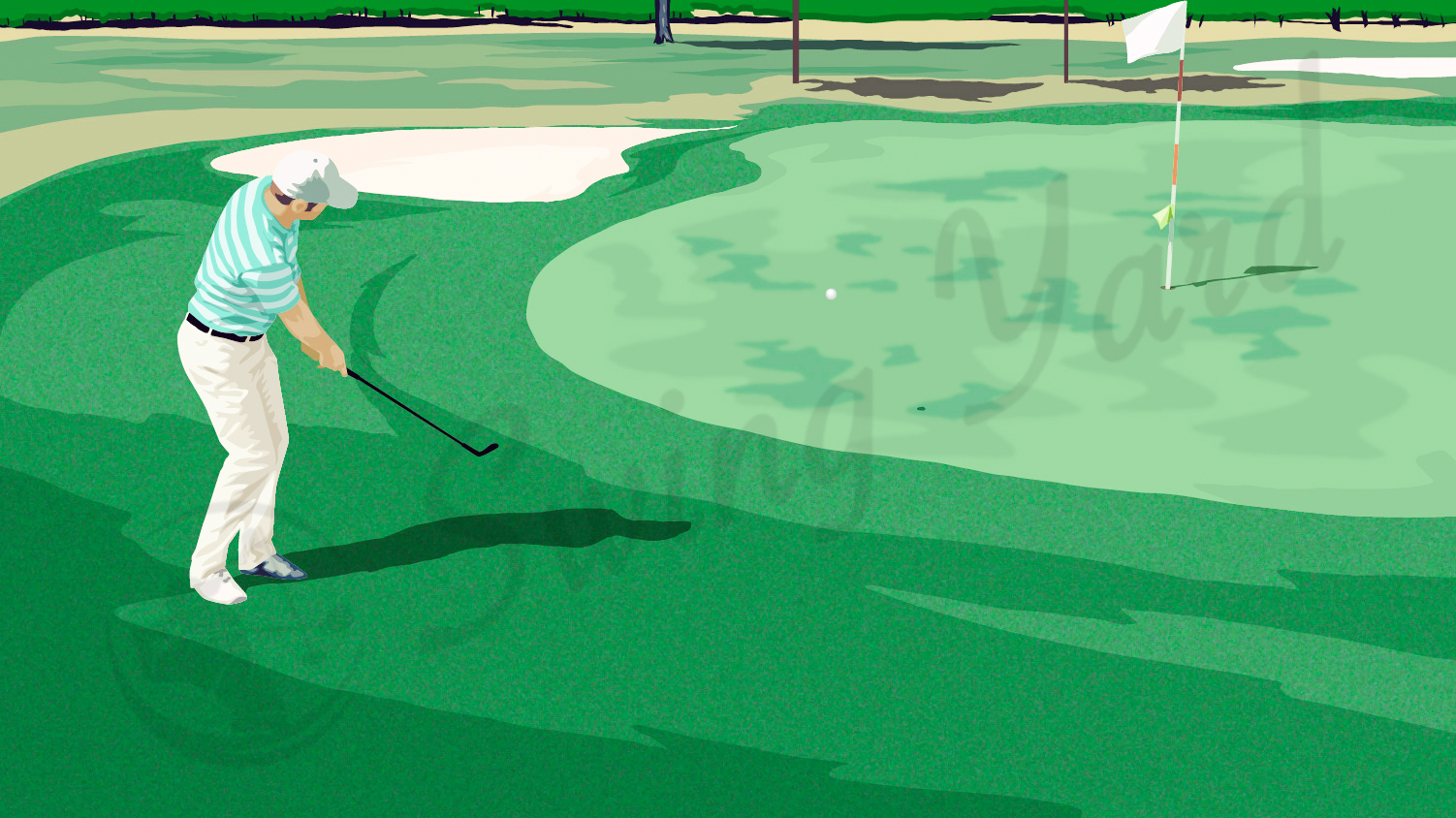

Then you will want to have a slightly more lofted golf shot. One where the ball gets a little higher, hits the green, and rolls just a few feet. This is typically best to do with a sand wedge or even a lob wedge. If you don’t have much green to work with, the slightly more lofted shot can help control the ball.
Sand shots are the third shot you will need to learn to hit well. It’s best to find a practice bunker with a practice green so you won’t have to worry about learning this skill on the course. Plan to take a little sand with you when you hit good shots out of a bunker. Pay attention to the ball position and make sure it is in the middle or back of your stance.
Most of the time, a bad shot in the short game comes from a poor decision more than a poor swing. Learn your three main shots around the greens and then put in some consistent practice.
You will find that the golf ball gets closer to the hole, eliminating the need for as much lag putting.
Putting Green
Three-putting is what leads to those unnecessary triple bogeys. Bad shots are to be expected when trying to break 100.
Let’s face it, being the next Tiger Woods is likely not in the cards for you. However, learning how to make more than one or two putts can really change the way you play the game.
On the PGA Tour, you will notice that it is rare to see a golfer three putt.
Professionals can get their long putts much closer to the pin and therefore leave themselves with short second putts. If you have a home course, chances are you will quickly learn the slope and speed of the greens, and that can also eliminate three putts.
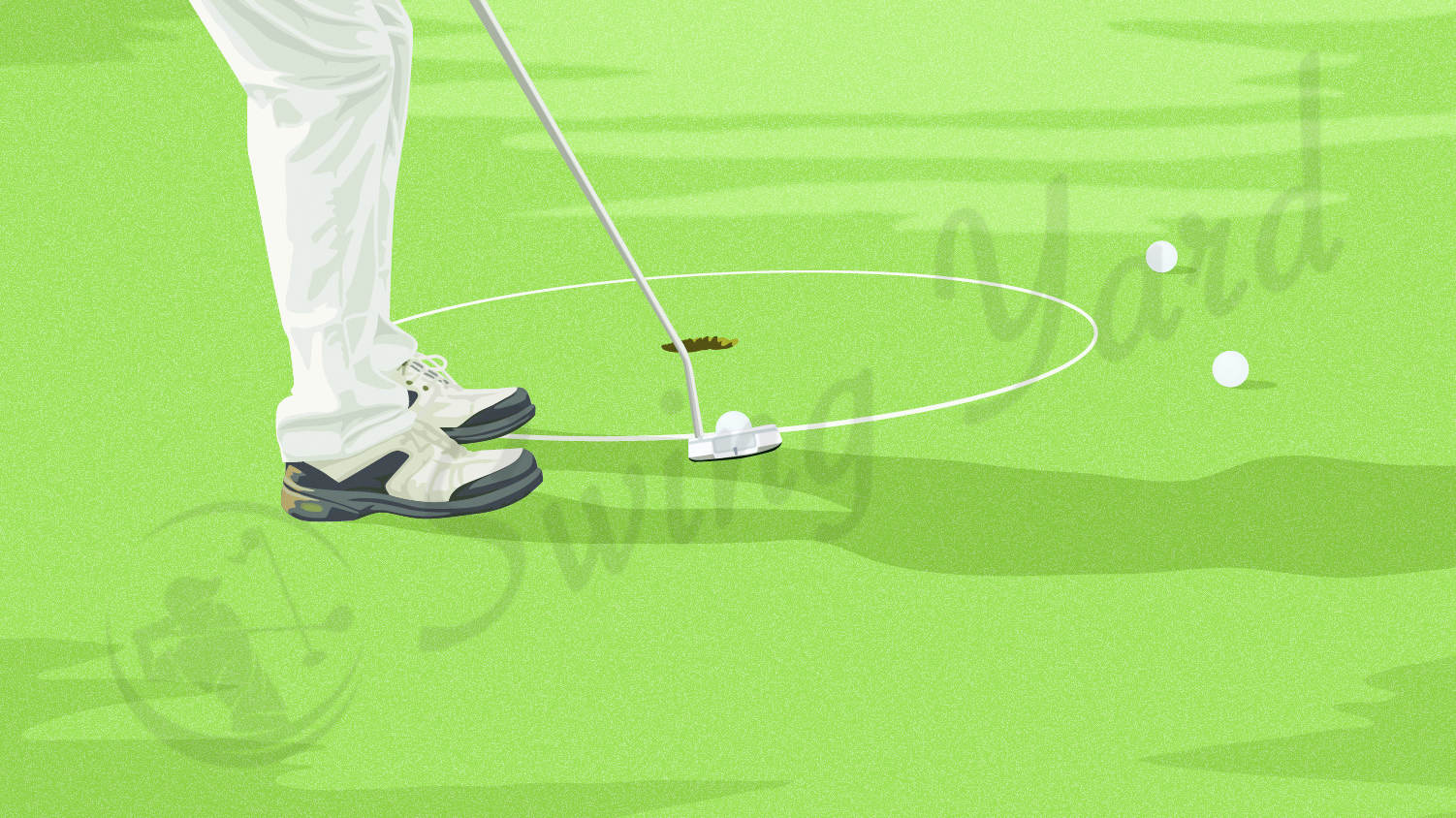

The thing I love about putting is that you can practice it anywhere. Most players that break 80 and even 70 have a way to practice putting at home. They have realized that the highest percentage of golfers that break 100 have improved their putting game.
The putting gets easier as you start hitting better approaches and better chips. However, in the meantime, it’s essential to work on ensuring your putter is strong on the majority of short putts.
I would practice on putts that are six feet and under and learn to make the majority of them. Beginners can do this by working on this process for just ten minutes a day. Most of the time, the progress can be noticed in just a matter of days.
Strategy/Mental Game
When you start beginning golf, the average person has no idea what a good strategy looks like. In fact, most feel like swinging out of their shoes and hitting the ball as far as possible is a good strategy.
I can tell you that it is not!
The key here is to make sure you get a good shot off the tee, one that does not put you in trouble. On the second shot, try to advance the ball closer to the hole, but not be concerned if it misses the green.
For shorter shots, attempt to get the ball on the green, and from there, work on a two-putt. Most courses have hazards that will make the hole considerably harder. When you find yourself in a bad situation, use something like a pitching wedge to get the ball back in play.
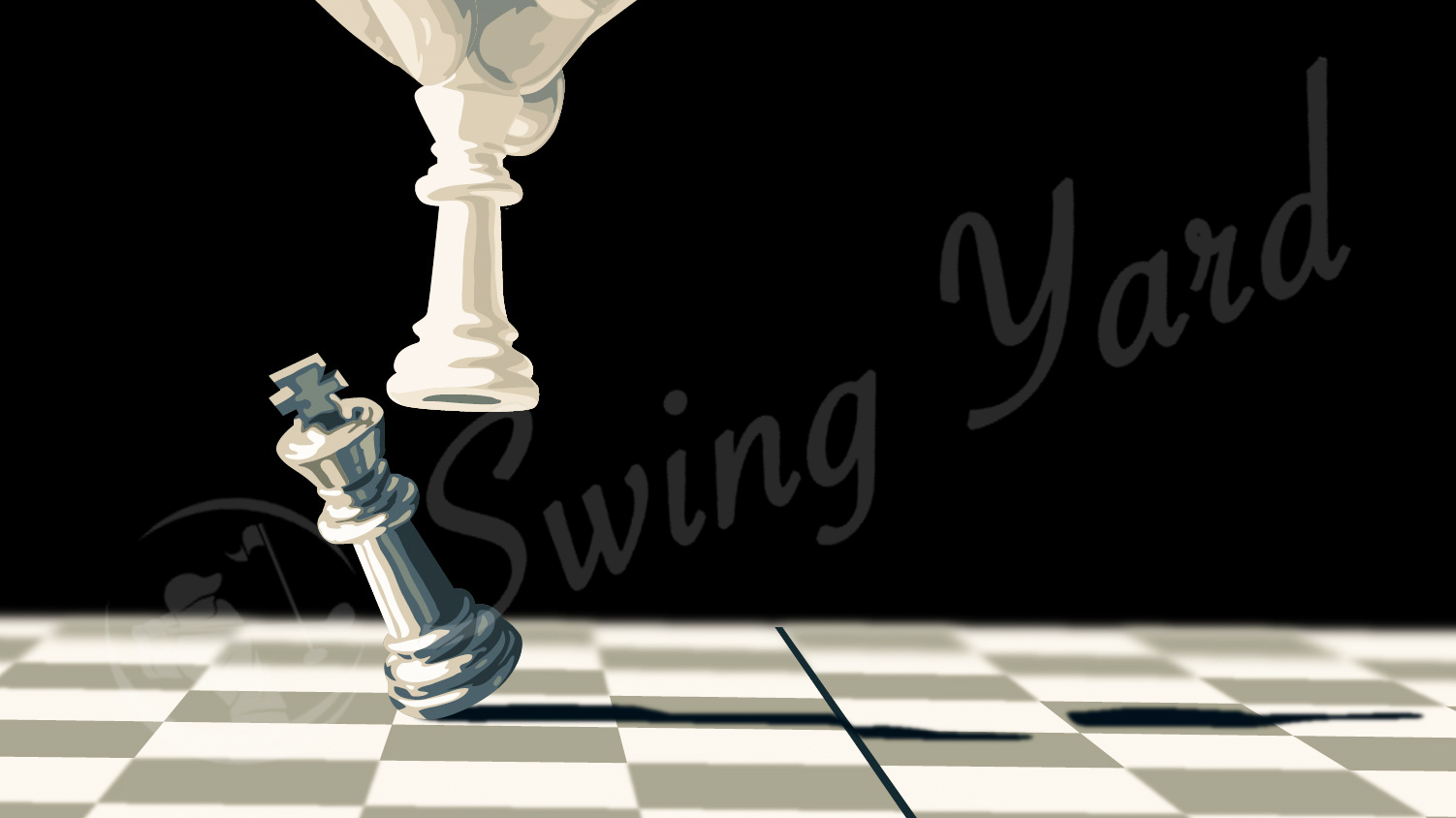

If you play the same course over and over, always consider what you did on your good holes and the mistakes you made on your bad holes. Hitting chip shots from different locations or choosing a different club off the tee can make a big difference in the performance you see on the course.
I would also recommend watching some YouTube videos about developing a pre-shot routine and what to do when you get frustrated on the course. There is plenty of information out there to help with game improvement.
Equipment
If you don’t have the right equipment in your golf bag, should you be out on the golf course? A huge amount of golfers that are trying to break 100 are using the wrong equipment. Not only do you have to make sure you have the right golf club in your hand, but you also need to ensure it’s the proper fit for your game.
Many players hit shots that are not great simply because their golf balls and clubs don’t match their swing.
Swing Speed Measurements
One of the best things you can do for yourself is to have your swing speed measured. If you learn your swing speed, you can choose all your clubs to be more fitted to your game.
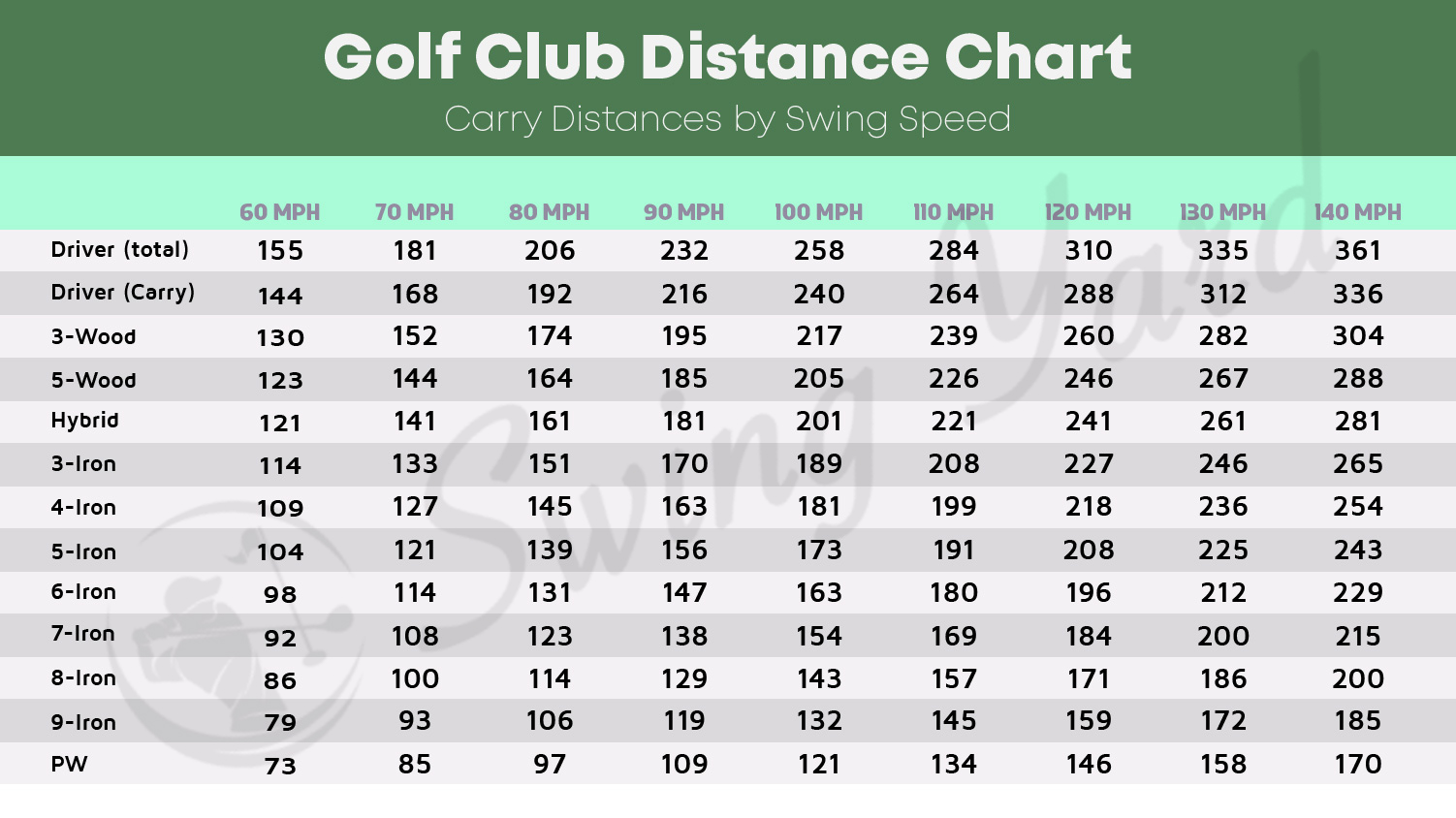

Golf equipment isn’t cheap, and you may not be able to get it all at once, but high handicappers should take advantage of the equipment that is out there on the market.
Custom Fittings
Scratch golfers go for extensive fittings to analyze things like launch angle, smash factor, and more. With a golfer trying to break 100, make sure you understand if you are a fast or slow swing speed player and focus on forgiveness instead of just more distance.
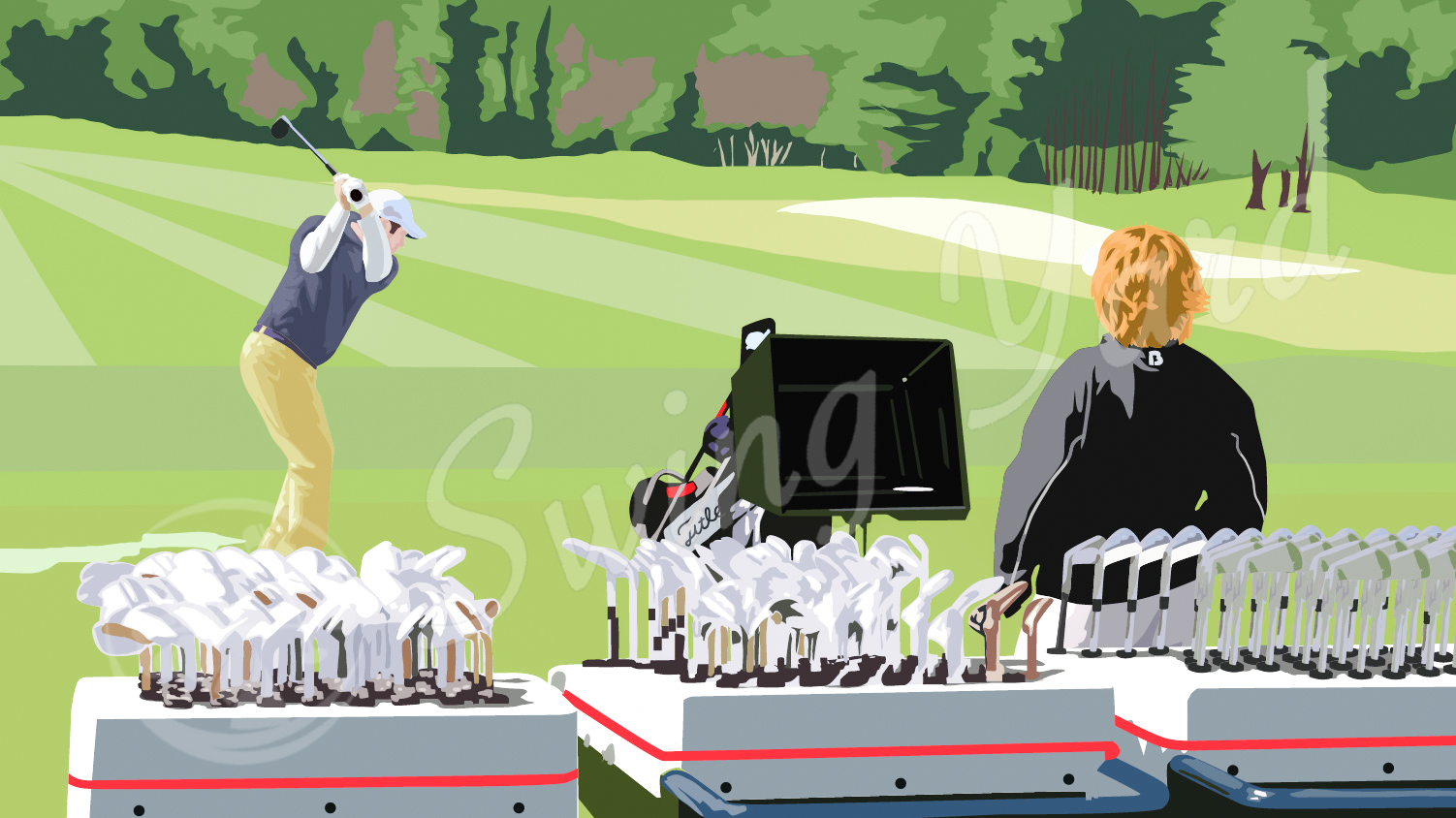

A full custom fitting may not be necessary; it’s more important to get a complete set that matches your swing speed and playing ability.
FAQ
Here are a few most commonly asked questions about how to break 100 golf. The process of breaking 100 and playing good golf is one that often takes a few years for a player to learn.
What percentage of golfers break 100?
The percentage of golfers who break 100 will vary anywhere between 50 and 60%. The actual percent of golfers that break 100 is difficult to handle because of issues with course difficulty, proper scoring for penalty shots, and those dreaded mulligans!
What is my handicap if I shoot 100?
If you are consistently shooting around 100 on a par 72 golf course, your handicap is anywhere from 27-29.
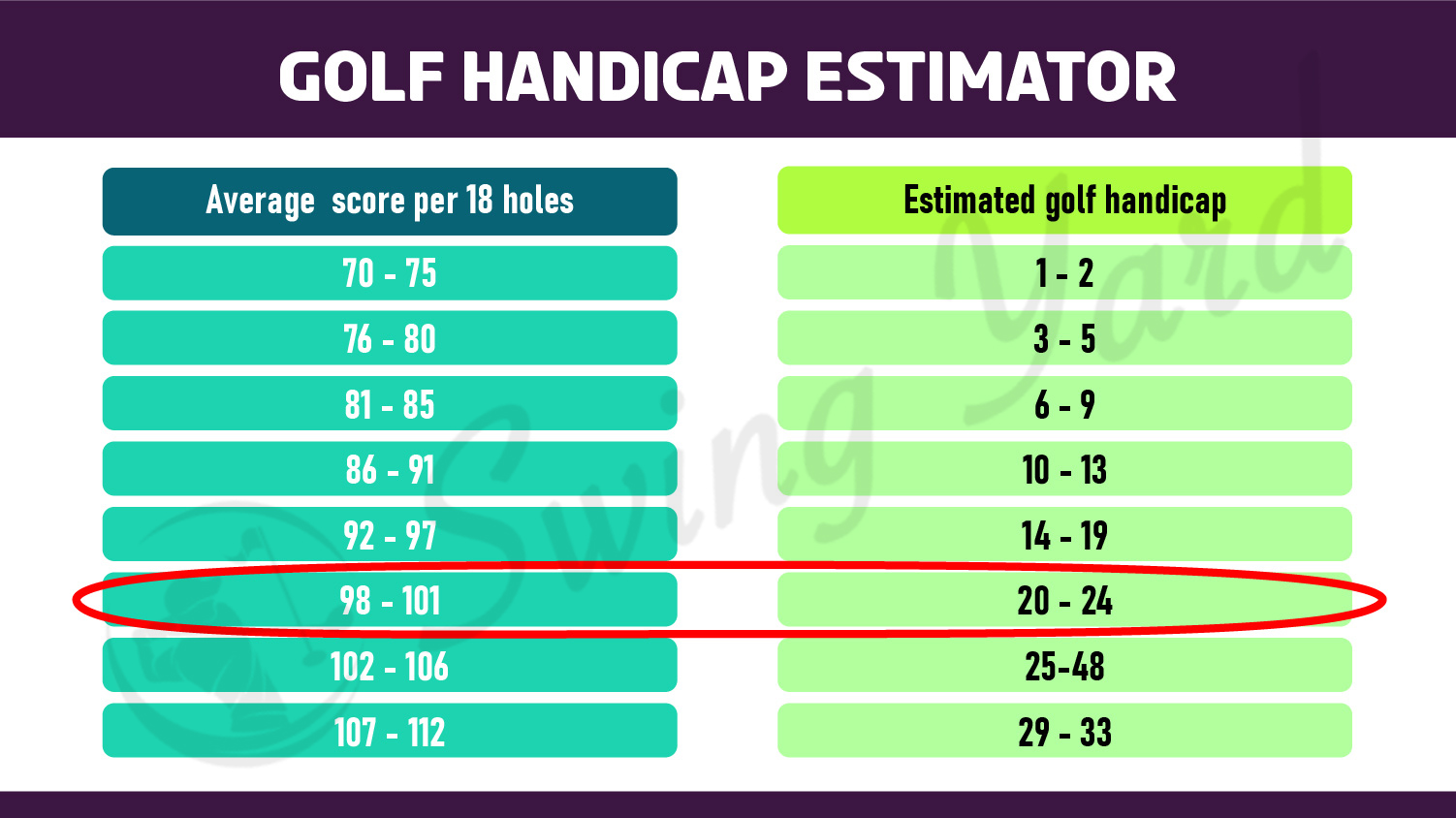

What does it mean to break 100 in golf?
To break 100 in golf means that you shoot lower than 100. After 18 holes, when you total your score, it will be lower than 100.
How long does it take to break 100 in golf?
It takes most golfers about two to three years to start breaking 100. You can reduce how long to break 100 in golf by practicing more frequently and working with a golf professional.
Is it easy to break 100 golf?
Breaking 100 in golf is not easy; it takes a certain skill level and the ability to hit quality golf shots. You might be surprised at how many golfers break 100 with a little more focus on their mental strategy.
What’s the average golfer shoot?
Average golfers shoot around 93 for a round of 18 holes of golf. It takes some time to dip below the 90s, and that requires more dedication and hours spent on the driving range.
Final Thoughts: Breaking 100 Consistently is Within Reach
Hopefully, you now have a better plan to break 100. The first time you break 100, chances are you will do it by more than just one shot. I will warn you that as soon as you golf break 100 for the first time, you will want to do it every time! If you follow my tips, you should be able to develop a very consistent golf game.

